CONTRIBUTED BY LOUISE DUPUY
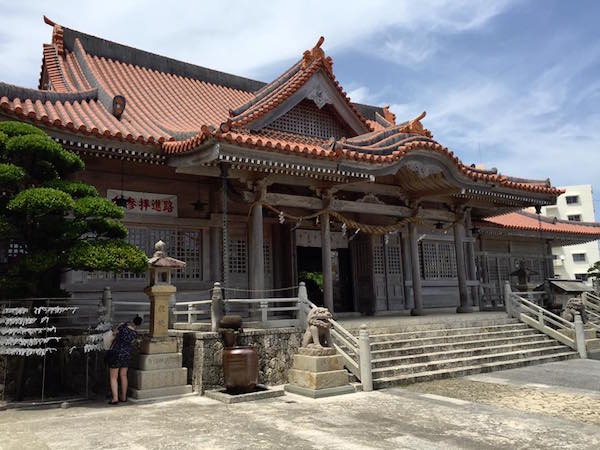
If you’ve ever driven out of Camp Foster’s Legion Gate and taken a right, you’ll have passed by Futenma Shrine Caves. You may or may not have spotted it; it sits just off Highway 330, slightly obscured by modern architecture. If you have noticed it, you may have thought to yourself “Oooh, I’d love to go see it”, and if you haven’t, hopefully, I have piqued your interest! Allow me to tell you the tale of a most ancient and beautiful shrine worthy of your visit and custom.
Visiting
First off, getting to it isn’t too much of a problem. Sort of. If you live close by, I suggest leaving the car and taking a walk. If not, there is parking right next to it (and just behind it if this area is full), but the road leading up, whilst short, is really narrow. Good luck if you have a Delica, I struggled in my Aristo! There’s also a bit of a blind corner, though happily there is a mirror put in place for you to see approaching traffic. Take it slow, and you’ll be fine. All parked up? Excellent. Let’s move on.
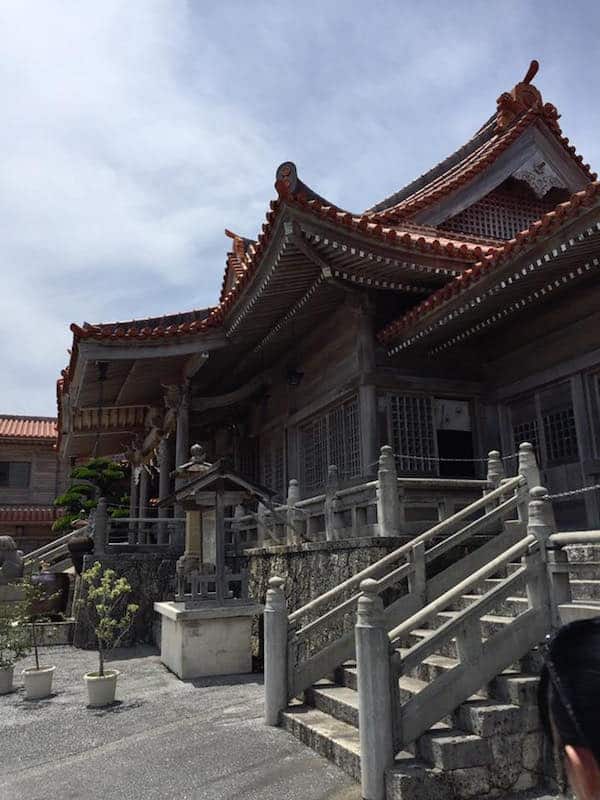
Entrance
The best way to enter any shrine is through its torii. This is a gateway made up of two vertical posts, and two horizontal posts. You can enter the shrine from where you parked, but entering through the torii is not only traditional, but it gives a great outlook. If you do go this route, give a little bow before entering. Futenma Shrine is a Shinto place of worship, and one of the most important shrines in the Ryukyu chain.
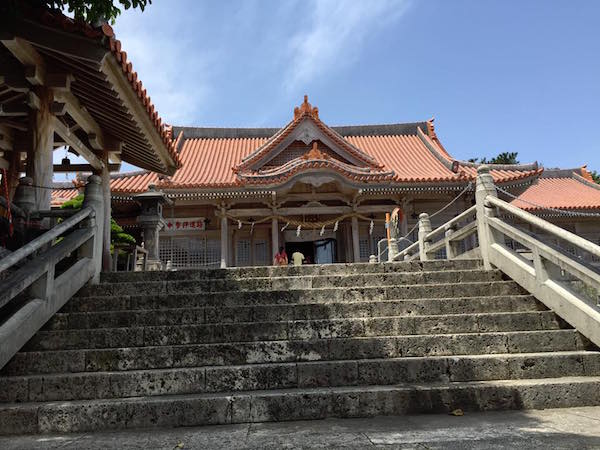
The first thing you’ll notice (if you took my advice and went through the torii), is what appears to be a paper garland hanging from a rope at the top. The rope is known as shamen Awa and is used as a purification in Shinto customs. It is an indication of purity and sacred grounds. The paper strung along intervals is known as shide, and it hangs vertically in a zigzag pattern. It is also a part of purification rituals in Shintoism.
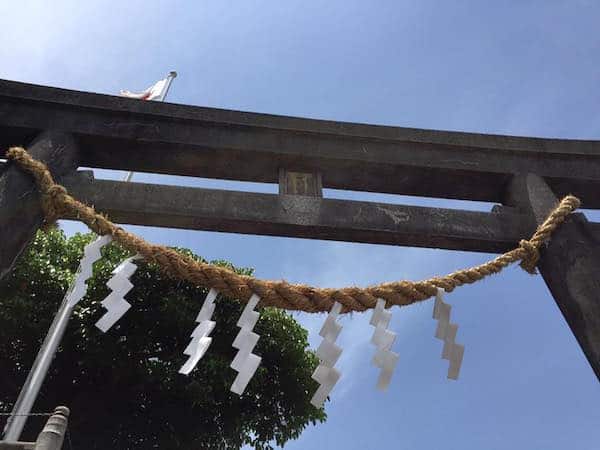
Beyond the torii and the stairs leading up, is the main shrine and its grounds. It is breathtakingly beautiful, a veritable haven. Its peace and tranquility are all consuming, cushioning you from daily life for the duration of your time there. Although history is a little sketchy, it is said that Futenma shrine has stood for over 500 years. It’s also one of the rare original structures, having escaped destruction during the war. Architecturally-wise, it’s a great example of both Japanese and Okinawa craftsmanship. Want to get the most out of your visit? Allow me to explain how a visit works.
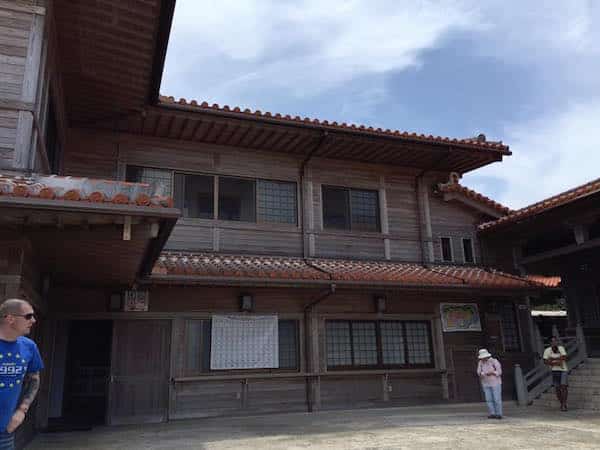
Firstly, to your left, you’ll see what appears to be a water trough made of stone, containing ladles nestled underneath a pavilion. This is known as a chozuya or temizuya, and is used to “cleanse the sins” prior to worship. it’s easy to perform a temizu (purification ritual), just follow these steps:
- Pick the ladle up with your right hand, scoop water, clean your left hand.
- Swap hands, repeat.
- Swap hands again, pour a little water into the left hand, drink (never from the ladle directly).
- Wash left hand, then the ladle with the remaining water by tilting it until it runs down the handle, replace.
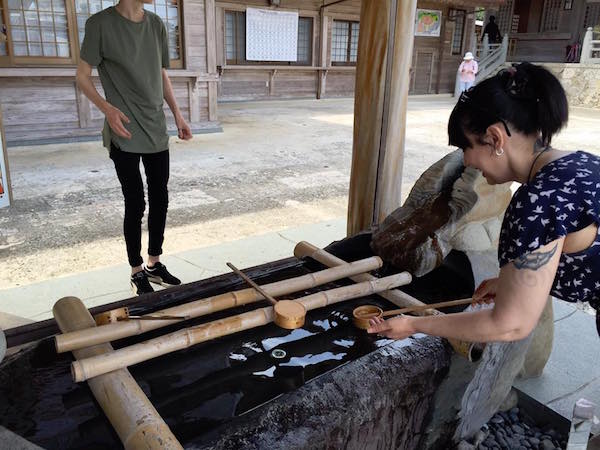
After this, make your way to the main hall (it’s right in front of you, up to a small flight of stairs with two very regal looking shisa standing guard). Drop a small donation into the wooden box just inside (no set amount, but a minimum of 5 yen is fine), clap your hands together twice, bow your head, and make a wish. Once you are through, a small bow, and you can take your leave. It is best to be quiet, as a service may be taking place. If you don’t wish to pray, this is perfectly fine, just be respectful of other worshippers. Pictures of the grounds are fine, but no flash photography and they prefer no pictures inside the worship area and of the shrine shop.
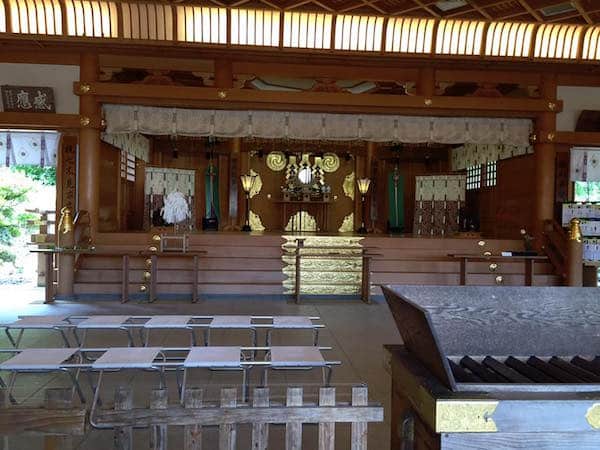
I mentioned caves, didn’t I? There are indeed a set of caves within the shrine. Visitors are welcome to see them for a maximum of 30 minutes at a time, so head to the little shop next to the main hall, and ask for caves. The staff will ask you to fill out a little form with your name and address, and after a short wait will take you down to the caves. I highly recommend you go see them whilst there.
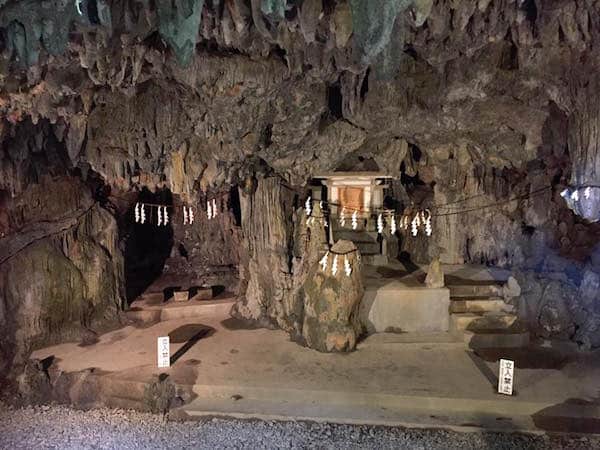
The area open to the public isn’t very big, but the rock formations are beautiful. Handsome stalagmites and stalactites pepper the area, allowing you to marvel at centuries of water erosion in this one small spot. As you come down the set of stairs, you’ll see a shrine in front of you. It sits on a slightly raised platform of rock. This is sacred, dedicated to one of the two Kami (Gods, more on them soon) that reside within the grounds, so please do not step on it! Once you have had your fill (photos are allowed, I even got the nice lady who took me down to pose for one before she left), make your way back the same way you came, being careful to close doors after you.
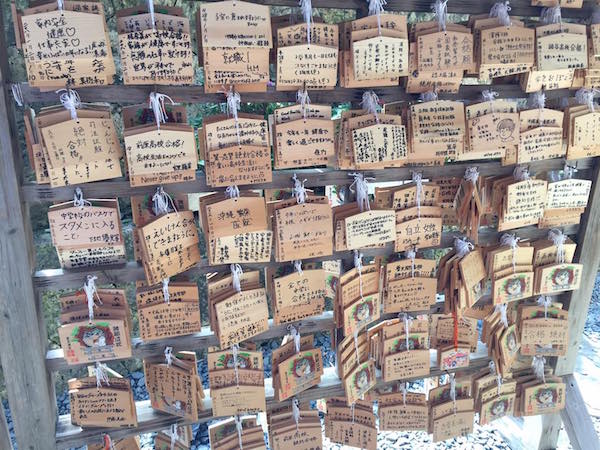
After this, why not purchase an omamori (lucky charm) from the same shop? They also have ema boards, which are the wooden wishing plaques. At 500 yen, they are a fair bargain, and you can fill in your wish (anything you like and can be written in any language), and hang it at the shrine (you’ll see the little stand that houses it sat near the path you take to visit the caves) for the Kami to see. Furthermore, omamori available at this shrine include car protection, exam luck, and fertility, amongst others.
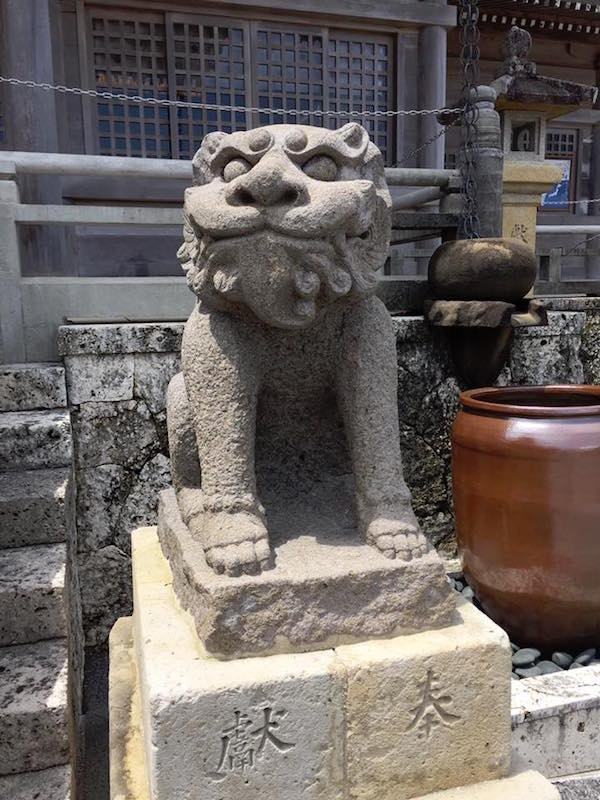
One can visit the Shrine during the day or at night, though the staff is only there during daylight hours. If you just wish to look around, the visit is free. If you wish to pray or purchase omamori, you will need yen cash. Caves and parking are also free.
History
You know how to visit, but what about the history and legend? As I said, this particular shrine has stood for at least 500 years, so it’s bound to have an interesting history right? Correct. Allow me to impart the tale of the two Kami that reside here.
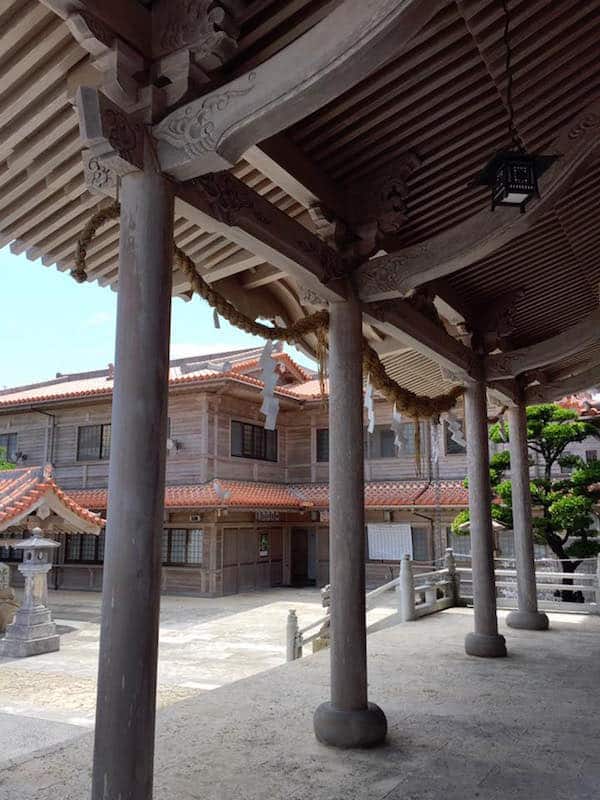
Megami.
Initially, the first deity is a female by the name Megami. The legend goes that two sisters used to reside in the Syuri area, one being of immeasurable beauty. This was Megami, but she was also pious and devout, locking herself away and dedicating her time to spiritual pursuits. Her younger sister married, and the husband became curious of the legendary beauty. One day, he decided to sneak a peak at Megami, who caught him. She was horrified, and fled from the house in hysterics, disappearing into the caves of Futenma, never to be seen again. Since then, she has become a divine being of the cave.
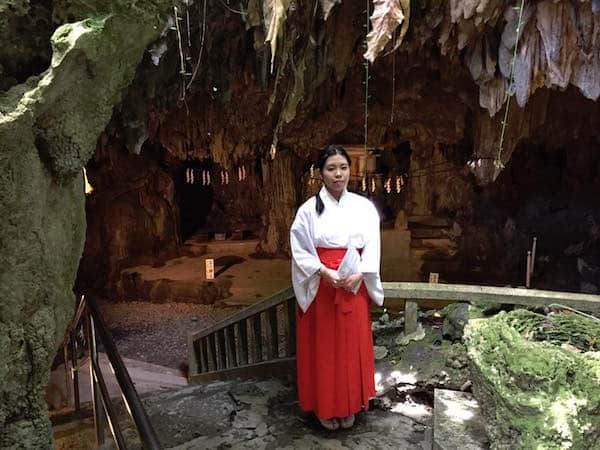
Kumano.
The second is a male Kami by the name of Kumano. This legend speaks of a humble couple. They lived impoverished in nearby Nakagusuku. The wife was a royal maid at Shuri Castle, a job she took to try to alleviate their dire circumstances. In fact, every single day, she would walk to Shuri Castle (you have to admire the distance), and on her way back, she would stop by Futenma to pray.
One day, Kumano visited the woman disguised as an old man, and handed her a wrapped package, asking her to care for it on his behalf. Baffled, she accepted. Time passed, and the old man never reappeared, so she prayed. He appeared before her in a dream shortly thereafter and revealed his true identity. He thanked her for her perseverance and told her to keep the item. Upon opening it, she discovered it was gold, transforming the couple into wealthy, prosperous people overnight.
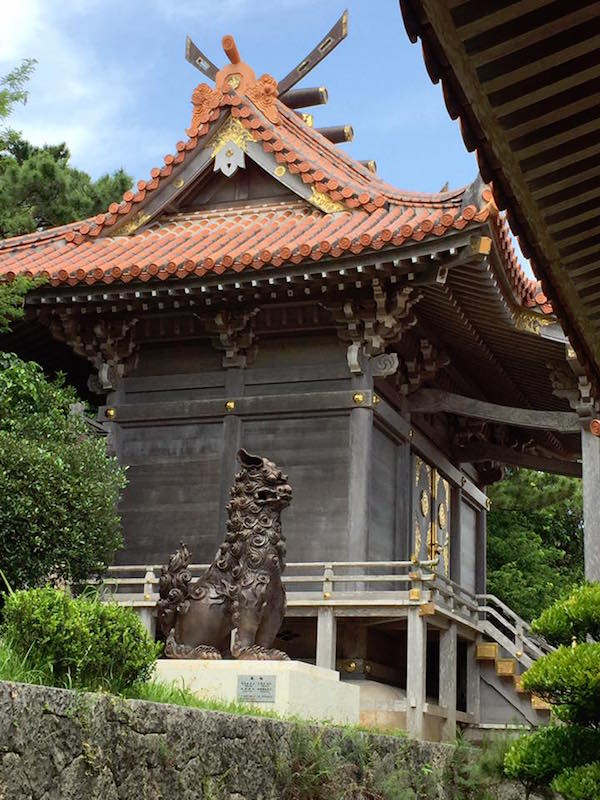
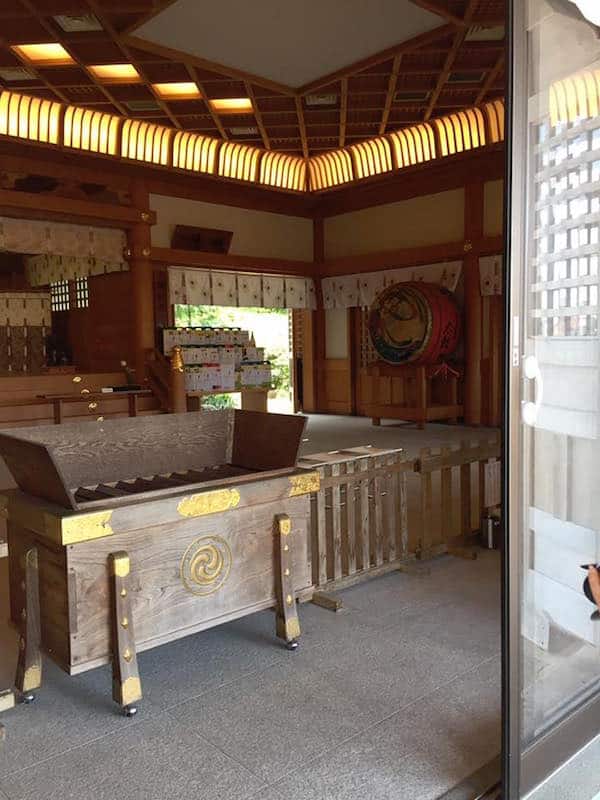
I hope that I have inspired you to wish to visit the fascinating Futenma Shrine Caves, let us know what you think!
Futenma Shrine & Caves
Address: Japan, 〒901-2202 Okinawa Prefecture, Ginowan, 普天間1丁目27−10
Google Map
GPS Coordinates: 26.2928667, 127.7770667
Directions: The shrine is just south of Camp Foster and Camp Buckner. However, the turn-off will sneak up on you. You can only enter when you are driving in the north lane of Highway 330. There is a middle divider blocking you if you are driving south. When you do turn off, it may not be apparent where you ought to pull in. There is a driveway to the right of the Torii Gate as you are looking at it. On driving through, it will take you to the parking lot. Parking is free.

